Irina Eshta Belly Dance Queen of Carnival of Stars
2014
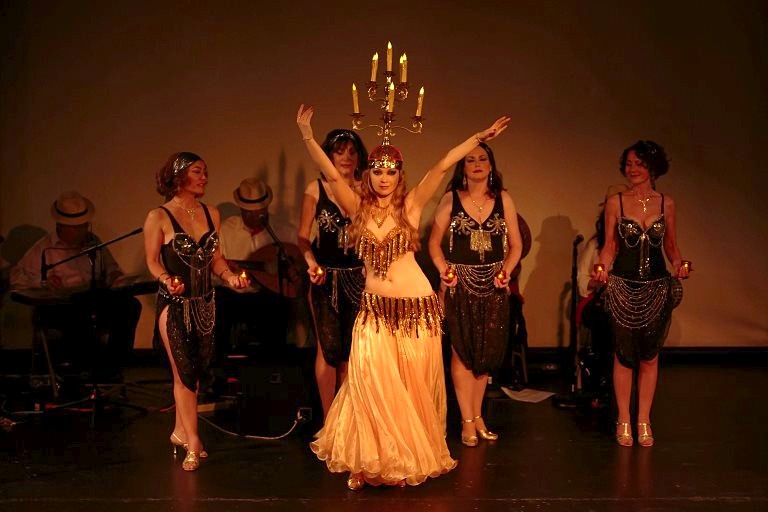
Irina Eshta's performance
is a tribute to Soheir Zaki of the 1960’s and 1970’s
BASINAH - FIRST RUNNER UP
LARA - SECOND RUNNER UP
Belly Dance Queen of Carnival
of Stars
August 3, 2014
Egyptian Belly Dance Revival - This
year the category is Traditional Egyptian Classical Raqs Sharqi as
performed in Egypt from the '50's to the early '90's. The music, dance,
costuming and mannerisms MUST conform to that time period and be stylistically
and culturally correct and true to the Egyptian style of Raqs Sharqi
as performed on the "cabaret" stages of the Cairo Egyptian
dancers of the 1950's to the early 1990's. pre AWS.
Performance - 5-7 minutes - veil, cymbals and/or veil not necessary
if it does not suit your piece of music. We are looking for authentic
traditional Egyptian dance (and music) - not tricks.
No AmCab or American fusion music. We want to see pure Egyptian dancing
before it was influenced by aggressive western styling and technique.
The music (song choice), dance and costuming MUST conform to the time
period between the '50's and the early '90's and more specifically
must agree with contestans' description. Dance, Music, Costuming and
mannerisms must be stylistically and culturally correct and true to
the Egyptian style of Raqs Sharqi as performed on the "cabaret"
stages Of the Cairo Egyptian dancers of the 1950's to the early 1990's.
pre AWS."
See Pure Egyptian Dancing
The Contestants
Badia, Basinah, Edemia, Eyyam,
Helwa, Irina, Janan, Lara, Marzie, Valentina
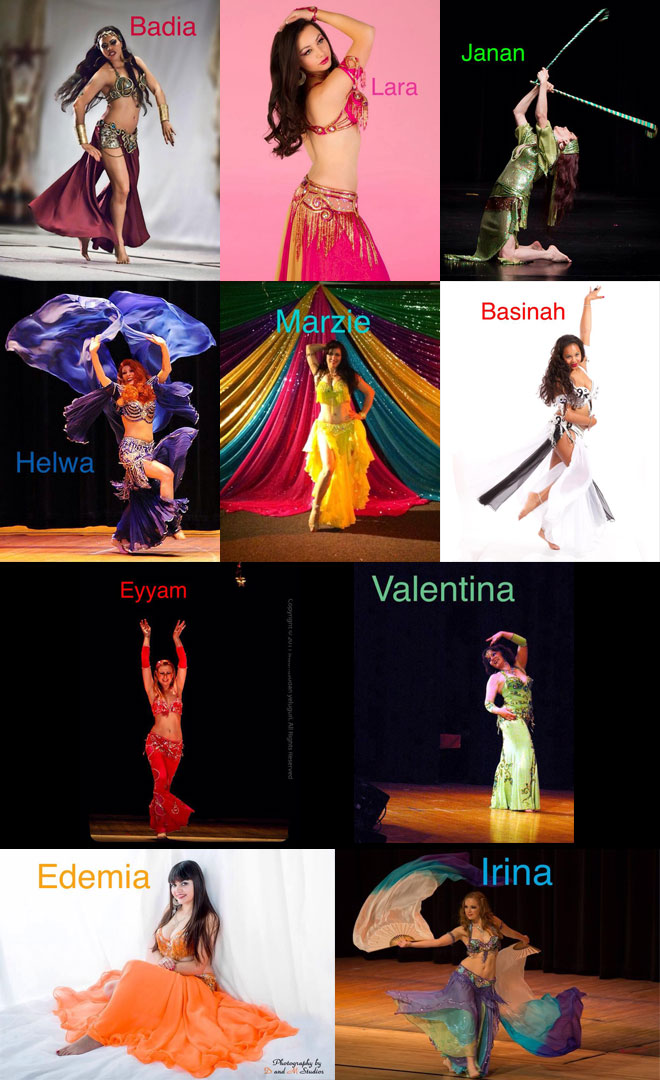
Badia
Badia will be performing
a 1970's Magency in the style of Nagwa Fouad and Soheir Zaki
"I will be performing a Magency in the style of Nagwa Fouad and
Soheir Zaki (1970’s). My costume is inspired by Nagwa Fouad’s
where she starred in the movie “Bad Reputation”. My music
is “Set El Hosn”, which was written for Nagwa Foud by Mohammed
Sultan. (Set El Hosn means Prettiest of the Pretty)
As a Classically Trained Theatrical Actor and Director, I was inspired
by the showmanship and theatrical stage style of Nagwa Fouad. During
certain parts of the music composition, my movements will be inspired
by the sharp and deliberate hip work of Soheir Zaki.
The original piece of music was fifteen minutes long. After days of
living with the music, by listening to it over and over, I finally
selected parts of the song that really moved me while dancing to them
with the intent to demonstrate not only my love for the music, but
my technique of Raqs Sharqi."
Basinah
Basinah will be performing
in the style and time period of Taheya Karioca and Naima Akef from
the 1950's.
Basinah will be performing in the style and time period of Taheya
Karioca and Naima Akef from the 1950's. Both dancers performed in
the movies, in hotel shows, nightclubs and/or weddings. I will be
doing a vignette typical of their movie nightclub/show performances
that will include all or part of a mergence', taqsim, and veil. As
a dancer, my typical dance style is American Cabaret. I found my choice
era beautiful, graceful, and very new to my comfort zone. I am completely
out of my element for this performance. I find it exhilarating and
very exciting! I hope that you will enjoy my attempt/version of this
beautiful and enchanting dance style.
Edemia
Edemia will
be performing to the beautiful song El Fan composed by Egyptian Mohammed
Abdel Wahab.
Edemia will be performing to
the beautiful song El Fan composed by Egyptian Mohammed Abdel Wahab.
Edemia is a Sacramento Belly Dancer, was born in Mexico City Mexico.
Edemia moved at the age of 20 to Sacramento, Ca. Her passion is been
dancing no only Belly Dance but also for Ballet Folkloric Dance.
She also designs her own belly dancing costumes. Edemia will be performing
to the beautiful song name: El Fen from the compositor and singer
Egyptian Mohammed Abdel.Her performance is classic belly dance style.Where
her moves are more about passion and connection to music and keeping
a life the authentic belly dance style, Where her dedication is been
for 11 year's.Thank you I hope you enjoy.
Eyyam
Eyyam is inspired
by the 1950s pioneers - especially Samia Gamal where she incorporates
techniques from ballet to Latin styles in her dance.
For my performance I am inspired of the 1950s, famous pioneers of
Egyptian belly dancers including Samia Gamal, Tahyia Karioka and Naima
Akef gave the beginning of the booming Egyptian film industry centered
around belly dancers in 1960-80. In my performance I will mostly follow
Samia Gamal. Her style is very unique, she incorporated techniques
from ballet to Latin styles in her dance.
I designed and made my costume from the scratch by myself. Following
Samia's style, but I inspired of many vintage costumes and tried to
add my own design, to give a feeling of look in 1950's and later.
Helwa
Helwa wants to take
you to a 5 star hotel show and will dance mostly in the style of Nagwa
Fouad.
"Imagine you’re in a five-star hotel or top end nightclub
in Cairo in the 1980’s, watching the floorshow extravaganza.
What would you see? If I could be an Egyptian-style dancer performing
in this time period and in those settings, I’d adopt movements
from Nellie Fouad, Nagwa Fouad, Shoo Shoo Amin and Aza Sharif. I’d
commission music for my show orchestrated by Hamouda Ali, like his
lovely pieces for Nagwa Fouad. I’d be thrilled to be wearing
a Mme. Abla dress in which to perform to Mr. Ali’s elegant music.
I hope you enjoy this fantasy as much as I do. Joyful Dancing to You
All, "
Irina Eshta
Irina Eshta's performance
is a tribute to Soheir Zaki of the 1960’s and 1970’s
Irina’s performance is a tribute to Soheir Zaki, a legendary
Egyptian dancer of the 1960’s and 1970’s, both in film and
on stage. Known for her meticulous ear for music, Soheir Zaki became
the first oriental dance artist to perform to the music of Oum Kalthoum.
The 1973 song used for the performance, Leilet Hob, from the album
“Leil Sabr Hedoud / Leilet Hob”, is one of the ten songs
composed by Modamed Abdel Wahab for Oum Kalthoum, with the lyrics
written by Ahmad Shafiq Kamel. The choice of the song is inspired
by a scene from the 1974 movie Lyaly Lan Taaood (Nights That Will
Never Return) directed byTayseer Aboud, in which Soheir Zaki is dancing
at a restaurant wearing a green bedlah costume.
To recreate Soheir Zaki’s signature 1970’s look, Irina will
wear a green short beaded fringe bedlah costume with an added body
stocking, a fully sequined arabesque design of a chiffon skirt with
the forever-famous two slits, and silver flats, Soheir Zaki’s
preferred footwear. The movements used in the interpretation of the
song are typical of Soheir Zaki’s dance style, characterized
by simple relaxed arms with some wrist circles and hand gestures,
small steps with body weight changes, relaxed Egyptian isolations,
hip circles and full body circles, forward hip lift accents, shimmies
stepping forward, relaxed and short spins, and musical accents caught
with precise stops.
Like Soheir Zaki, Irina strongly believes that dance is art and must
always be honored and respected, and that "being a dancer is
not about showing off your body and posing on stage", but is
about interpreting the music, dancing from one’s own inspiration
and feeling, and letting the music move your body.As said in a famous
song by Oum Kalthoum, "So you want to go back to the old days?"
Janan
Janan would like
to present a general impression of the dancers of that era, including
Naemet Mokhtar, Tahiya Karioka, Samia Gamal.
I will not imitate the style of a specific dancer in my performance,
but have studied footage of several dancers active in the 1950s to
present a general impression of the style of the era, including Naemet
Mokhtar, Tahiya Carioka, Samia Gamal, and others. I hope to enhance
this presentation through styling of costume, hair, and makeup.
I am dancing to “Ahwak” (“I Love You”), a popular
love song by Abdel Halim Hafez which he first performed in the 1957
film “Banat El-Youm” (Girls of Today). His performance of
thissong does not feature a dancer, but it focuses on a lingeringimage
of a woman lost in deep emotional contemplation as he sings the song
at the piano. I aim to convey the romantic tone of the song in my
dance performance.
This is a translation of the song as provided by the website Lyrics
Translate:
I love you._And I wish if I ever forget you,_I forget my soul with
you._And if it becomes lost, it's OK, if you've forgotten me.
So I forget you, and I forget all you pain._And I start longing for
it again._And I find my tears remember you, so I return to you._At
times, the whole world comes with you._And its wish is your wish._And
then, maybe you will end, depriving my love of you.
I love you._And I wish if I ever forget you,_I forget my soul with
you._And if it becomes lost, it's OK, if you've forgotten me.
So I forget you, and I forget all you pain._And I start longing for
it again._And I find my tears remember you, so I return to you._At
times, the whole world comes with you._And its wish is your wish._And
then, maybe you will end, depriving my love of you.
I dream of finding you thinking of me, and I of you._And my eyes meeting
yours._And the words written on your face, while you try to hide them._And
I'd nourish you, wake up from my sleep to call you._And send my soul
to wake you._So you who has stirred my soul, try out my fire.
I dream of finding you thinking of me, and I of you._And my eyes meeting
yours._And the words written on your face, while you try to hide them._And
I'd nourish you, wake up from my sleep to call you._And send my soul
to wake you._So you who has stirred my soul, try out my fire.
I love you._And I wish if I ever forget you,_I forget my soul with
you._And if it becomes lost, it's OK, if you've forgotten me.
So I forget you, and I forget all you pain._And I start longing for
it again._And I find my tears remember you, so I return to you._At
times, the whole world comes with you._And its wish is your wish._And
then, maybe you will end, depriving my love of you.
Lara
Lara's performance
pays tribute to the styles and theatrical themes of the 1950's of
dancers such as Katy, Hermeen, Taheya Karioka, and Samia Gamal.
My performance pays tribute to the styles and themes of the 1950's.
It draws inspiration from dancers such as Katy, Hermeen, Taheya Karioka,
and Samia Gamal. Like many of these dancers in their classic films,
I will be performing a theatrical piece. In this scene, the dancer
-- myself -- finds herself in a dream where she is dreaming of the
new love she has just met before falling back to sleep.
Marzie
Marzie will dance in the style
of her favorite dancer Nagwa Fouad from the 1960's and 1970's.
Nagwa Fouad is my favorite Egyptian dancer. She became famous in the
early 1960’s when she introduced a new style to the era. She
has been quoted saying “ I came to change the style from Samir
Jamal.” She is very theatrical and always smiles no matter what
the song might call for. She engages and connects with her audience,
keeping it interesting by changing her movements often and varying
her speed. Her style is very dramatic and smooth. Her dances aren’t
too sexy; they are more entertaining yet elegant. Her most characteristic
moves involve eyebrow movements, facial expressions, and playing with
her hair.
I based my costume on her costumes. I designed and handmade it specifically
for this competition. The shape is similar to the one she wears in
the movie “Husband by proxy” (1961). The belt is inspired
by her performance in “What is life for?” (1961). She wear
the green and gold color combination in the film “ Searching
for a scandal” (1973).
This design allows me to mimic some of her distinctive movements.
For instance, the way she holds her skirt when she twirls. Some of
my favorite performances from her are from her career debut and this
is what inspired my style for this song, in particular her dance in
the movie “The Police Inspector” (1960). A lot of hand/arm
movements, shaking her head, playing with her hair are characteristic
of her style. Her mannerism is smooth and funny. She captivates her
audience by surprising them with facial expressions and rapidly changing
her moves. And of course, she always smiles! This is what I intend
to replicate in my choreography.
I chose the song “Walah leeab el Hawa” from Susu’s
new CD Nostalgia. It was originally sung by Ahmed Adaweyah who is
a legendary Sha’abi singer from the 1970’s. He uses modern
instruments like the keyboard, saxophone, the trumpet and the accordion,
as well as traditional instruments such as the nai, violin, kaanun,
riq, large cymbals, and tabla. This cover uses only traditional instruments.
Sha’abi was always considered the music of the working-class.
It has become very popular and is being used in restaurants, at weddings
and parties. Even though, this probably wouldn’t be a song Nagwa
Fouad would choose, the lyrics remind me of her style and can be roughly
translated as “Finally, love is in the air and we are together.
Flowers are there and the jasmine is here and I am the king.”
The song is sometimes referred to as “sultan sultan” which
means king.
Valentina
Valentina will perform
in the style of the time period of Taheya Karioka, Naima Akef, Samia
Gamal, Sohair Zaki, Fifi Abdo.
I am Valentina.
It's my great pleasure and honor to participate in this contest. Thank
you for watching me :-)
I'm going to perform in the style of the time period of Taheya Karioka,
Naima Akef, Samia Gamal, Sohair Zaki, Fifi Abdo. I like the music
and songs that those dancers were performing.
Why do I like dancing? Dancing for me is like singing the songs, and
expressing my emotions and feelings with my body. Sausan is my belly
dance teacher. I've started taking classes from her in 2006. In 2008
I started performing in Al-Masri restaurant.The song I'm dancing to
is El Sorh composed by Farid Al Atrache. That is instrumental version
of the song from LP "Super Belly Dance with Farid El Atrache.
Year : 1980"
THE CRITERIA
Did the dancer do her research
and makes sure that everything conforms to the same time period chosen
by the dancer?
Stage presence and personality.
Does the dancer also reach out to the audience? Is the dancer entertaining?
Mannerism/style of dance/personality/audience interaction. Modern
Oriental dance is rather aggressive, athletic, direct and can be too
busy. The contestants should dance and act appropriate to the style
chosen and act more like the dancers of the 50s-90s.
Execution of movement and musicality. Is it
appropriate to the piece chosen - rhythmically and musically (phrasing,
lyrics) correct?-
Technique. Not so much the
difficulty and execution of the technique, but its appropriateness
to the chosen time period and dancer.
Choreography.
Appropriateness. For example, if a dancer chooses Fifi Abdo, she should
stick to Fifi's simple moves.
Song choice. Don't dance in the style of 50s
to the song written in the 80s.
Costuming (overall appearance - but not a beauty
pageant - ) The aesthetics of appearance such as clean styled hair,
steamed, clean, well fitting and stylistically correct costume, etc.
Is everything appropriate to the style of the era/dancer chosen.
Overall impression. How well do you like the
particular dancer and is she memorable?
The Judges
Amina Goodyear, Cathy Guthrie,
Jacques Al-Asmar, Terry D., Zahra Zuhair
Amina
Goodyear
Amina Goodyear began dancing professionally in 1966 at San Francisco's
famous Bagdad Cabaret, where she was a principal nightly dancer for
twenty years. Amina's teaching career began in 1971. Soon after, she
founded The Aswan Dancers, premiere Egyptian dance company. She also
founded The Giza Club, The Giza Academy Awards, The Cairo Cats Band
and co-founded The Arabian Knights Band and The Pasha Band.
Amina teaches cultural Egyptian belly dance including specialty styles
such as Tarab, Oriental, Shaabi, Mahraganat, Dellaae, Melaya Lef,
Saidi, Assaya, Nubian and even AmCab, Debke, Khaligi and Turkish on
request. She also teaches Arabic song translations, how to interpret
songs while dancing and percussion including tabla and zils. Dancers
learn to move to the music, the lyrics and the drum and learn to choreograph
and/or improvise to CDs and live music. Because she performs percussion
regularly with the Aswat Arabic Ensemble, the Georges Lammam Band
at PenaPachamama and with The Pasha Band at Al Masri, she provides
many dance performance opportunities.
Cathy Guthrie
•Weeklong intensive classes with Dahlena for many years
•Classes with Ibrahim Farrah, week long intensives with Elena
in NYC
•Teacher of Belly dance classes and director of troupe AlAma
in Nevada City, CA
•Member of Aswan Dancers with opening for Naqwa Fouaat the International
Conference in Southern California 1997
•Taught Belly dance at the Lark in the Morning Music camp
•Regular dancer at restaurants in Sacramento, Rockland and Dublin
Calif. Greek
restaurant in Reno, NV.
•Guest dancer at clubs in NYC and Chicago
•Drummer with the Evergreen ensemble in Nevada City
•Zurna player with Hahbi Ru, directed by John Compton.
Jacques al Asmar
Jacques Al~asmar was born in Accra, Ghana. He was raised in Beirut,
Lebanon.
For the past twenty-five years, he has lived in the United States.
He has studied, performed and taught internationally. His passion
for dance was noticed at an early age.
Influenced by the legendary Nadia Gamal, Jacques watched his own body
move in the same genre as Nadia Gamal. However, his lack of formal
training in dance and cultural barriers held him back from pursuing
a much- loved art form. Jacques' formal training came at a later stage
of his career. In 1993, thanks to the Legendary Amina of the ASWAN
DANCERS, who trained, educated and supported Jacques, he became a
dance sensation overnight.
Jacques is a co-founder of the Arabian Knights band and producer of
Salamat Sundays in San Francisco, California. Jacques is currently
in pursuit of a Ph.D in psychology in Atlanta, Georgia. “Jacques
Al~Asmar is a feast for the soul” Dr. Elias Abou Joaudeh
Terry Del Giorno
Terry has been studying Belly Dance since she was a teenager and teaching
for the last 20+yrs in the Bay Area. She first started her study of
Egyptian dance, (like a lot of dancers did) with VHS tapes of Mona
Said, Nagwa Foud, and Nelly Fouad. She continued her studies with
Master Instructors Sahra Saida, Shareen El Safy and Safi (Ann Ziemienski),
well-respected American dancers who had worked in Egypt. She continues
to study here and abroad with world-renowned Egyptian dancers. Her
last trip to Egypt was in 2011, leaving just days before the revolution
and she hopes to return soon.
She considers herself lucky to have been performing when opportunities
were plentiful and being the “house” dancer was the norm
not an exception. Those kinds of gigs where a dancer could develop
a show with her band and had the full cooperation of the management.
Terry performed in nightclubs like Scheherazade, Petra, Sultan's and
Luxor where her shows catered to the audiences who were eager to experience
the dance and the music of their culture, left behind in the Middle
East.
Terry regularly performed for the Egyptian American Association, Lebanese
American Association and Syrian American Association as well as countless
weddings and private events.
She opened for Arab entertainment legends like Sabah, Warda, Nourham
Hanna, Walid Toufic, George Wassouf and Ragheb Alame.
Terry considered herself a“working dancer” and never competed.
However, she does admire and applaud all the dancers' who bring dedication,
hard work and artistry to the stage for these events.
Terry thanks COS producers Pepper Alexandria and Latifa for continuing
their efforts at creating this festival for local and visiting dance
artists. Special gratitude to Amina in creating the contest and inviting
her to sit amongst the talented judges.
Zahra Zuhair
Zahra Zuhair began studying Oriental Dance in the early 1970's. She
took her first of many study tours to Egypt in 1979, which sparked
a love of Egyptian dance. Since that time, Zahra has traveled to Egypt
extensively, conducting tours and studying with master teachers, such
as, Raqia Hassan, Ibrahim Akef, Mahmoud Reda, and many more. Zahra
has been invited to teach numerous workshops, worldwide, along side
many renowned Egyptian teachers and legends, such as, Nagwa Fouad,
Mo Gedawi, Aida Nour, Lubna Emam, and Randa Kamal, to name a few.
Zahra loves sharing her vast knowledge and expertise with her students,
and is based in Los Angeles, CA, where she teaches regular weekly
classes.
Grand Prize Belly Dance Queen
of the Golden Era of Egypt Dance:$100; Free Entry to 2015 Silver
Anniversary of the Belly Dancer of the Universe Competition (BDUC),
Egyptian Category, Valentine's and President's Day Weekend, February
13, 14, 15; Trophy, Crown donated by Multi-Kulti; Banner; Dinner
gift certificate donated by Al Masri Egptian Restaurant, Featured
dancer at the Carnival of Stars Evening Show 2015
First Runner Up: $50; Trophy;
banner, Gift Box from Bitchin' Baklava
Second Runner Up: $20,
Trophy, Banner, Gift from Wicked Smilies
All Contestants receive Gift from
Wicked Smilies
email
Amina
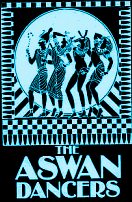

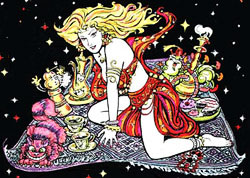


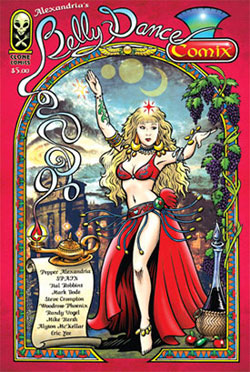
 \
\